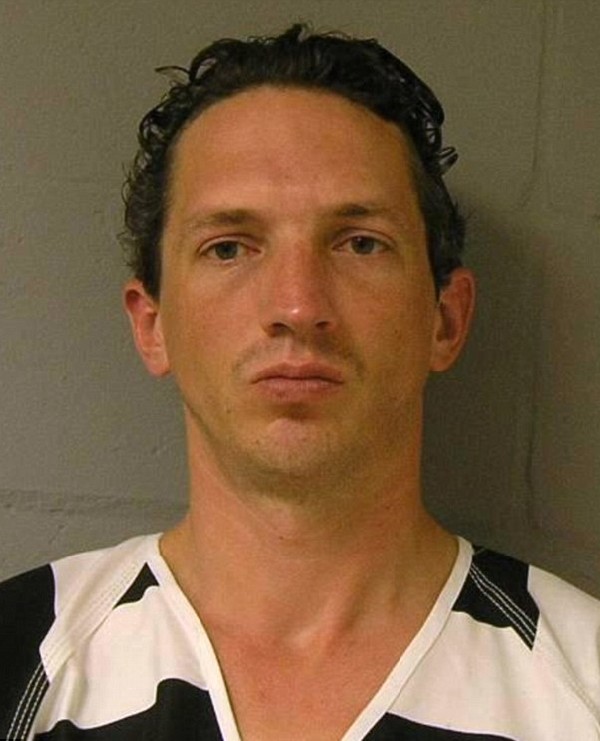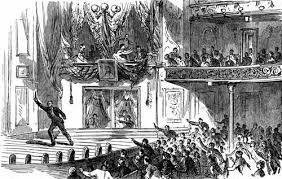During the summer of 1997, there was a gathering of teenagers who were inner-tubing near the Deschutes River in Oregon. In a late afternoon, Israel Keyes patiently waited for a young girl between the ages of fourteen to eighteen to separate from the gathering. Keyes found his victim and abducted her, and led his victim away from the group, where he sexually assault the young girl before releasing her and making his getaway.1
Israel Keyes was the second oldest of ten children. As a toddler, his family left Utah and moved to Washington, where Keyes was raised in the Christian religion after his parents decided to leave the Mormon Church. As young Israel grew older, he started to break into neighbors’ homes to steal guns, torture animals, and would pursue anything to kill in order to sustain his need for being in control. While Keyes’ family lived in Washington, he became neighbors and childhood friends with the brothers Kehoe, who had been convicted of attempted murder as well as murder.2 Since being childhood friends with the Kehoe brothers, it is possible that some of their ideas would have helped shape Keyes’ mind into what it became. He developed an interest in Satanism in his teenage years. He grew up to be extremely self-centered, well organized, and intelligent, and he found that he was driven by the thought of violence, which over time soon made him love inflicting pain on others.3
In 1998, Israel Keyes joined the U.S. Army, and he served tours in Egypt, Fort Hood, and Fort Lewis until 2001, when he was honorably discharged. However, prior to his enlistment in the military, he had already committed crimes that law enforcement still had not yet solved. After being discharged, he started his own construction company in Alaska, which soon became his “base” from which he ventured out to nearly every region in the United States and abroad to commit murders. To help him commit these murders, he buried “kill kits” in the areas where he planned to commit his murders. These kits were plastic containers filled with weapons, money, and useful tools to kill and discard the victims’ bodies near his targeted area. Even though he had his construction business, he would not use the money earned from it to pay for items or trips related to the murders; instead, he would utilize the money he received from robbing banks during his journeys across the nation.4

Everything he bought was paid for with cash. He would purposely remove his cell phone’s battery to lessen the chance of being tracked down. He never committed murders in the same town twice and would kill far from his home. One major detail that distinguished him from other serial killers was that he did not have a victim profile. He preyed on both men and women of all ages during broad daylight and at night. Keyes would bury planned murder kits in random places and took extra caution to avoid being detected. He would search for his victims in parks, campgrounds, walking trails, boating areas, cemeteries, and remote areas, and took into consideration if they had an attached garage, any children, cars in the driveway, or dogs when targeting a home. After each murder, he would flee the area immediately. Keyes never had any previous connection with his victims, which made everything easier for him, since nobody would be able to recognize him. He would study the work of other serial killers and always tried to be better than them. Out of all the people he’d read about, he admired Ted Bundy, and he had plenty of similarities to him: they were both methodical, intelligent, and delighted in having possession over their victims; but despite their similarities, they had differences. Bundy’s murders were throughout the country because he would reside in different areas, but they were not as intentional as in the case of Keyes, and unlike most serial killers, he pulled back from the spotlight.5
Between the years of 2006 and 2008, Keyes traveled to Mexico and visited a plastic surgery clinic and other clinics to get dental work, a gastric band, and laser hair removal. He also had his fingerprints modified. Keyes’ family never believed in doctors or medicine, which made investigators wonder why Keyes scheduled them and kept his family in the dark about them. After discovering he had gone through plastic surgery, detectives decided to ask numerous questions to all his fellow soldiers, but with one in need of being answered, “What was his physical appearance back then?” Each man described that Keyes always stood out in several ways: his sheer size, when standing he stood between 6’2 and 6’4, was built like a rock, 230 pounds of muscle, and had a huge nose.6
During an evening in February 2012, Israel Keyes violated his own rules and made two mistakes. He had kidnapped and killed a victim in his hometown, which violated his rule about killing in his hometown. And he let an ATM camera photograph his rental vehicle while withdrawing money from his victim’s debit card. He kidnapped eighteen-year-old Samantha Koenig who worked as a barista. Keyes did not know his victim and he wasn’t stalking any specific coffee stand when he decided that a coffee stand was going to be a good place for an abduction. Prior to kidnapping Koenig, he drove around town and found out that Common Grounds was open the latest, and it was at that moment when he chose his target.7 Through surveillance cameras, Koenig was seen working on a coffee order, but when she handed Keyes his order, he revealed a gun. A few moments later Koenig handed money from the cash register to Keyes, and then he entered through the window. Once Keyes zip tied her hands, he led her away from the stand into his truck, and Koenig tried to run away but Keyes caught up to her and threatened to kill her if she ever tried to run away again. After detaining Samantha in his truck, he returned to the stand to get her cell phone, since he viewed it as an important part of his plan. Keyes demanded Samantha’s debit card, and she informed him that it was in her boyfriend’s truck. Without a thought, he went to get her card, leaving Koenig inside a shed in front of his house, and leaving a radio playing at high volume so no one could hear her cry for help. When he arrived at her house, he attempted to break into the truck, which alarmed Koenig’s boyfriend to step outside of the house to confront the stranger. The two had a brief altercation, in which Keyes barely escaped, while Koenig’s boyfriend went back inside his home to call for help. Keyes nevertheless got the debit card and escaped. Before heading home, he tested the card and the PIN that Samantha had given him and found that it worked, and withdrew money from her account and traveled back home. Once home, he sexually assaulted Koenig before suffocating her to death, leaving her in his shed with the cold temperature’s from outside. The following day, Keyes departed for New Orleans for a two-week-cruise and left Koenig in the shed in his yard. After he arrived back from the cruise, he photographed Koenig holding on to the newspaper of that day, and sent the photo to her family using it to exploit them, making them believe that she was still alive. Since Koenig’s body was left in cold temperature’s, she did not show any signs of decomposition, so to make her family think she was alive Keyes sewed her eyelids open to make her look alive. Her family raised the money in hopes of her return. Unfortunately, she had been dead for nearly two weeks and Keyes was prepared to get rid of the evidence. After her family deposited the money, he dismembered her body and buried it in the surface of a lake while he fished.8

When Keyes withdrew money from Koenig’s account that initial night, police began tracking down each action that involved her debit card. Every time he would withdraw funds, he disguised his appearance. But a security camera from an ATM captured an image of Keyes’s rental car in Arizona. As soon as the FBI found out about the image, they informed Texas Highway Patrolmen about the vehicle and that anyone driving the vehicle was a person of interest. Luckily on March 16, 2012 in Lufkin, Texas, one of the Highway Patrolmen on patrol noticed the same vehicle that was described and followed the driver, wondering if they would do anything dumb. To his surprise, Keyes committed a traffic infraction that helped the Highway Patrolman to pull him over, and he asked Keyes for his driver’s license; without a doubt in his mind, he searched Keyes’ vehicle and found all the proof he needed to link him to Koenig’s abduction.9
Once Keyes was arrested, he was extradited from Texas back to Anchorage, Alaska on credit card fraud charges. Confronted with all evidence tying him to Koenig’s abduction, Keyes confessed to the crime and led law enforcement to where Koenig’s body was buried. A month after his arrest, a grand jury from Anchorage accused Keyes of the kidnapping and murder of Samantha Koenig. While Keyes awaited trial in jail, he was interviewed for over forty hours by detectives. While detectives interviewed him, he would not completely answer their questions, and Keyes would only talk about what he wanted, not what investigators would ask him.10
Keyes soon confessed to crimes he had committed in the eleven years prior, and told investigators that he felt no remorse towards his victims’ deaths. After a few interviews, he made a deal with law enforcement in exchange of his confessions. He wanted an assurance that he would be executed within a year and that he would go unidentified to the public about his crimes. He could not live being caged up, he said, and he did not want his daughter to know about his committed crimes. Slowly through interviews Keyes dropped hints about some of his victims, which alarmed investigators to create a timeline from all his trips, and from reported missing people, hoping that they would match disappearances, bank robberies, and unsolved murders to when Keyes was in the area.11

During one interrogation, Keyes confessed to three other victims: a couple from Vermont and another person from New York. The investigators knew their identities. While Keyes would be in his jail cell, he secretly painted skulls with his own blood, which were discovered underneath his bed. Investigators believed that he committed rapes and murders between 2001 and 2012 involving twelve victims that would have potentially been the one’s Keyes drew.12 Three months before Keyes’ scheduled trial for Koenig’s murder, he committed suicide in his jail cell via strangulation with a bed sheet and self-inflicted wrist cuts despite guards being warned to not provide him a razor blade. To the surprise of authorities, under Keyes’ body was a multi-page suicidal letter soaked in his blood, which left investigators and Koenig’s family disappointed. Once the letter was analyzed, investigators concluded that it did not contain any evidence or clues to his crimes, but was purely a “creepy” poem to murder, written by a serial killer who loved to kill.13
After the discovery of Keyes death, the FBI sent out a petition to the public, asking that if anyone had any information to come forward and help them fill in their gaps of knowledge. Investigators have tracked Keyes’ travel and financial records to put up a timeline of his whereabouts from 2001 to 2012, searching for anyone who might have been contacted by him prior to his arrest in Texas.14
- Micheal Whelan, “Israel Keyes,” Unresolved Podcast, Nov. 13, 2015, https://unresolved.me/israel-keyes. ↵
- Biography.com Editors, “Israel Keyes Biography,” A&E Television Networks, May 21, 2020, https://www.biography.com. ↵
- Micheal Whelan, “Israel Keyes,” Unresolved Podcast, Nov. 13, 2015, https://unresolved.me/israel-keyes. ↵
- Charles Montaldo, “Profile of Serial Killer Israel Keyes,” March 12, 2015, About.com, https://webachive.org/web/20160426203701/http://crime.about.com. ↵
- Fredrik, “Israel Keyes,” Crime Scene Database, May 4, 2016, http://crimescenedb.com. ↵
- Maureen Callahan, American Predator (New York: Viking, 2019), 226-230. ↵
- “Serial Killer: Israel Keyes,” video file 12:30, Spotify, posted by Crime Junkie Podcasts, May 6, 2019, https://crimejunkiepodcast.com. ↵
- Matt Pearce, “Attacks by suspected serial killer Israel Keyes followed a pattern,” Los Angeles Times, Dec. 5, 2012, https://www.latimes.com. ↵
- “Serial Killer: Israel Keyes,” video file 8:30, Spotify, posted by Crime Junkie Podcasts, May 6, 2019, https://crimejunkiepodcast.com ↵
- Charles Montaldo, “Profile of Serial Killer Israel Keyes,” March 12, 2015, About.com, https://web.archive.org/web/20160426203701/http://crime.about.com. ↵
- Maureen Callahan, American Predator (New York: Viking, 2019), 145-147. ↵
- Marlene Lenthang, “FBI releases chilling images Alaska serial killer Israel Keyes drew ‘in his own blood’ of 11 skulls,” Daily Mail, May 14, 2020, https://www.dailymail.co.uk/news/article-8320941/FBI-release-chilling-images-Alaska-serial-killer-Israel-Keyes-drew-blood-11-skulls.html. ↵
- Maureen Callahan, American Predator (New York: Viking, 2019), 270, 273-275. ↵
- “Crushed like a bug you still die: The chilling four-page note found underneath Alaska serial killer Israel Keys’ body after he slit his wrist,” Daily Mail, Feb. 16, 2013. ↵




69 comments
Alvaro Garza
It’s so odd to me that such “normal” people can turn out the way Israel Keyes did. It’s troubling to know that people like this are walking around among us. Every article and story that I read like this makes me wish there were more programs to identify and assist people with violent tendencies. This article was an entertaining read, and I also found it to be really informative.
Anonymous
This is a generally excellent article, but there’s one thread you missed which makes his development into a serial killer and bank robber much more logical. He wasn’t a generic Christian – as far as I can tell, he was raised in Christian Identity (or, at best, in an Identity-adjacent community). The best-known Christian Identity congregation is usually referred to by their old name – “Aryan Nations”. CI’s doctrine is virulently white supremacist, and often pro-violence (though these days they publicly claim to want to establish their whites-only ethnostate peacefully). I’d say it’s no surprise that a child raised in Christian Identity would wind up dangerously violent, even if his actions were recreational rather than the political crimes the Kehoes committed for Identity.
Desiree Arizmendez
Amazing article! This was such an easy read, I really appreciate the writing that was put into this article, I learned so much and it kept me engaged into the story. It’s always interesting and mind blowing seeing the way serial killers come from. The way that they grew up and seeing that not all serial killers are alike. It is very scary to see that a man with such a normal and not harmful background could do such things. He was stable enough to know what he was doing was wrong and he kept doing it.
Andrea Salas
This article showed me a way that a serial killer came to be. It’s crazy to see how their childhood plays a big role. I always knew that, but I thought it was because of how they were treated by their parents, or something to do with their family. This is the first time I hear that a friend is that influenced him in a way. I feel like that friend made a huge impact into why is came to be motivated by violence. Every story is different and it’s crazy to know that there are a lot of people out there with these same intentions.
Christopher Jordan
First I would like to say I thought this was a very good article and the author did an outstanding job. This was a very interesting story and it seems like I should’ve heard of Mr. Keyes before. I find it very scary how Mr. Keyes had a relatively normal background but could be such a monster. I was also shocked to hear how the crimes weren’t that long ago, I feel like with most serial killers their crimes are usually 1980s and prior. I found this article’s content very engaging and am looking for more like it moving forward.
Mohammed Hani Shaik
Firstly, I have to say the article is very well written and had me drawn in from the start all the way till the end. Serial killers are a topic that intrigue me a lot and especially in this case the article clearly states an important point that I feel should be scrutinized. You would think a man who has committed all sorts of crimes would be devoid of any type of attachment or emotion. Still, he asks the law enforcement to not let his daughter know of these crimes. This very clearly shows that he was still mentally able to ration feelings of love yet I wonder what motivated him to carry out such heinous crimes. Was it really the need to feel in control?
Faith Chapman
The troubling thing about this (for me) was reading this and realizing that I was alive when he was still active—around 10 years old, give or take. I only became more troubled reading that he was caught in Texas, which is where I’ve mainly lived. I guess since this article was published, law enforcement didn’t uphold their agreement to not go public about his identity and crimes, or maybe this became a moot point since he killed himself before he could be executed as agreed upon?
Victor Rodriguez
It is engaging to see how the story of a serial killer develops. Each story is unique and different. I thought that this man had an enormous intellectual mind in order to study the successes of other serial killers and imitate their actions. It gives me shivers to see that there are people with so much evil in their soul that want to bring so much pain to the lives of other people. It is very ironic to see that this man had a Christian background and with the experiences he went through decided to turn into a serial killer. I do not believe that serial killers are suddenly made from one day to the next. It takes some sort of hate against something or perhaps a trauma in order to be a serial killer. It is truly captivating to see how your environment can influence the person you become.
Alexandria Garcia
This article did very well in describing the change Keyes went through before starting his career as a serial killer. Its terrifying at how smart and strategic killers tend to be and how they all look up to one another as if Serial killing is an honorable “career”. It is also terrifying to know how many of these remote places I have been myself- trials, cemeteries and even in my own house!
Shriji Lalji
A very interesting article. I don’t understand how his parents do know something is off with their child when he was going into neighbors homes stealing guns and looking for something to kill. Keyes probably suffered from psychopathy. The detail and length he would go to in order to get a kill are astounding. Killing for him seems to be like an addictive drug.